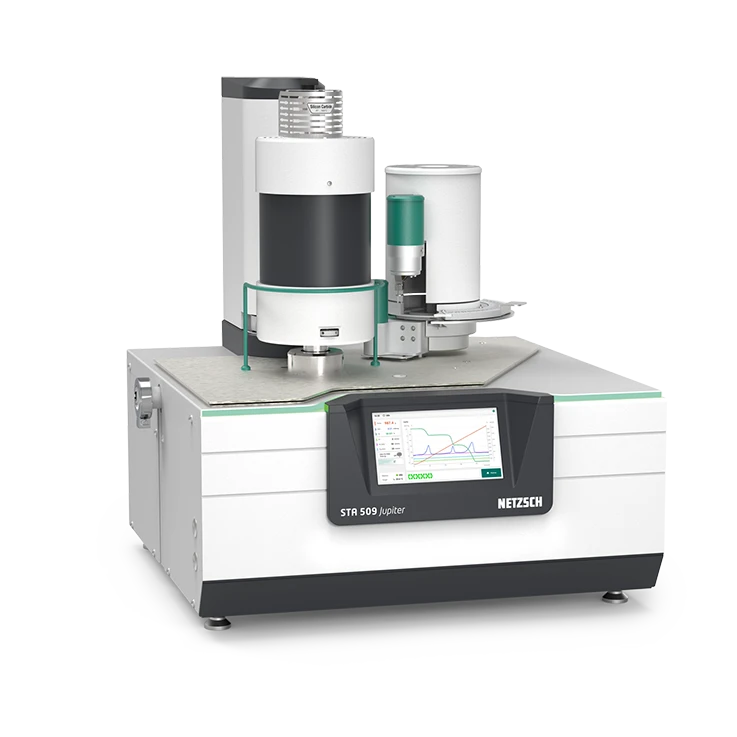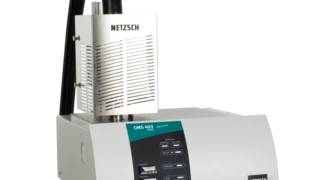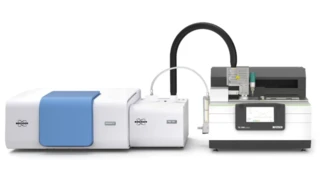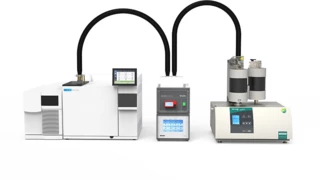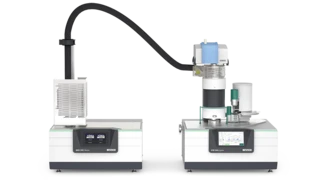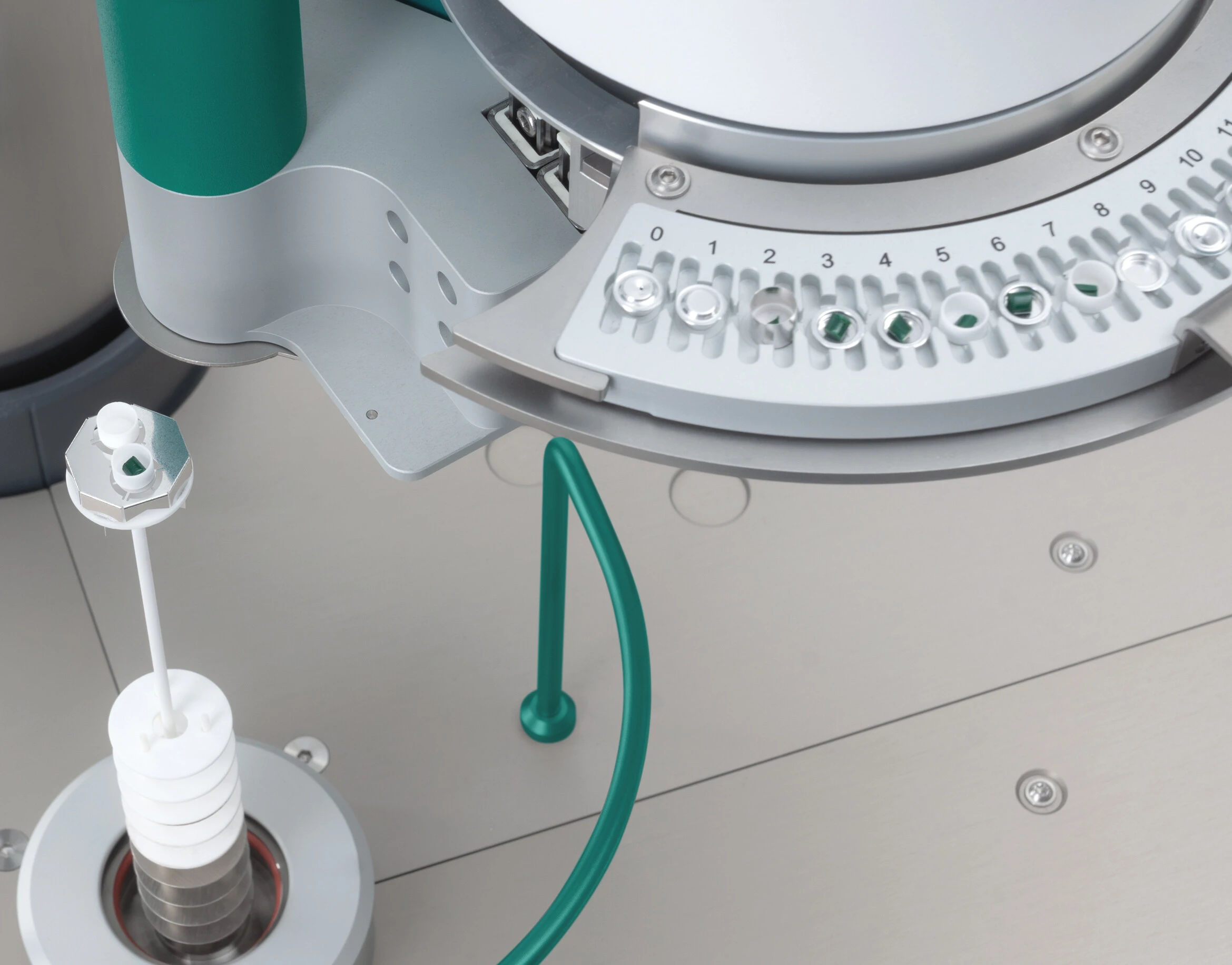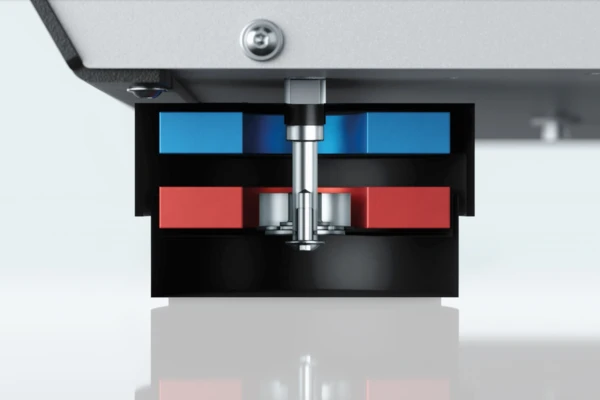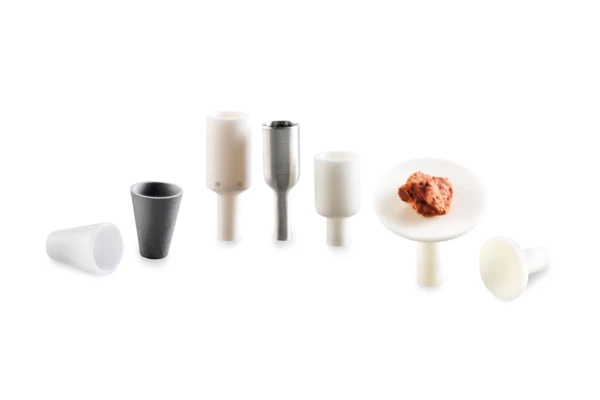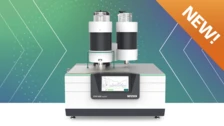Highlights
Outstanding Performance Coupled with Cutting-Edge Design
Widest temperature range (-150°C to 2400°C) and largest selection of accessories with the STA 509 Jupiter® Select
The Select version offers exceptional flexibility, allowing you to tailor the configuration to your exact hardware and software requirements. Its user-interchangeable furnaces and sensors, coupled with a wide temperature range from -150°C to 2400°C and highly sensitive heat-flow DSC capabilities, make this system exceptionally well-suited for the analysis of a wide range of materials. The remarkable adaptability of this system makes it an invaluable asset that consistently meets the demanding needs of researchers and scientists in industrial and academic applications.

Improving Your Productivity and Workflow by Design
The STA 509 Jupiter® simplifies thermal analysis with its integrated color display to start pre-programmed measurements at a touch. Its LED light bar provides at-a-glance instrument status with color-coded indicators, allowing you to monitor measurements remotely without accessing a PC. This convenient design keeps you informed while streamlining your workflow.
Modular Design for Multiple Applications
The STA features a modular design for seamless customization. Its interchangeable furnaces and sensors allow it to be easily adapted to multiple applications over a wide temperature range from -150°C to 2400°C. This modular approach ensures versatility, allowing you to tailor the system to your specific needs, whether in an industrial or academic setting.
Top Loading Balance Design
The top-loading, electronically compensated design provides optimal performance and ease of use. The ideal choice for flexible analytical systems and evolved gas analysis.
Defined Atmospheric Conditions
The vacuum-tight design and meticulous gas flow control enable precise handling of high-purity atmospheres, including inert, oxidizing, reducing, and corrosive gases.
Precision and Accuracy
The combination of nanogram balance and high performance heat flux DSC provides exceptional accuracy with minimal drift and unmatched flexibility for high sample loads.
Eco-Friendly Performance
The electronic thermal stabilization and Eco Mode optimize efficiency, delivering peak performance while reducing energy and gas consumption for substantial savings - promoting sustainability.
Accessories and Evolved Gas Analysis
Various sample holders broaden the range of applications. The integration of evolved gas analysis with MS, FT-IR or GC-MS extends the analytical capabilities of the STA 509 Jupiter® Classic.

The STA 509 Jupiter® Series
The modular design of the STA allows for easy exchange of furnaces and sensors to accommodate multiple applications over a wide temperature range from -150°C to 2400°C. The top-loading design provides ideal performance and easy of use, making it the obvious choice for a flexible analytical system and evolved gas analysis. The vacuum-tight design and meticulous control of gas flows allow precise handling of high-purity atmospheres with respect to various inert, oxidizing, reducing and corrosive gases.
A wide range of accessories, including humidity and water vapor generators, expand the application possibilities. Furthermore, the integration of Evolved Gas Analysis with MS, FT-IR, or GC-MS systems significantly enhances the analytical potential of the STA 509 Jupiter® series.
- STA 509 Jupiter® Classic
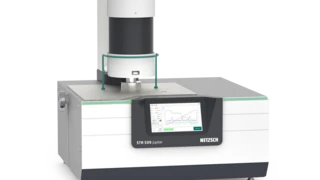
Best Price/Performance Ratio
- RT to1600°C
- SiC furnace
- Balance resolution: 0.1 μg
- Optional 20-position ASC
- STA 509 Jupiter® Select

Taylored to Your Needs
- -150 to 2400°C
- Choice of 12 different furnaces
- Balance resolution: 0.1 μg
- Optional 20-position ASC or 2nd furnace
- STA 509 Jupiter® Supreme
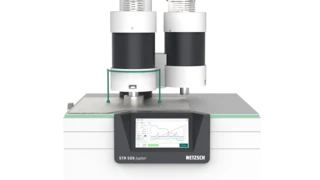
Instrument for Highest Performance
- -150°C to 2000°C
- Choice of 9 different furnaces
- Balance resolution: 0.025 μg
- Optional 20-position ASC or 2nd furnace
Method
Simultaneous Thermal Analysis
Simultaneous Thermogravimetry (STG) is a method used to analyze the Thermal StabilityA material is thermally stable if it does not decompose under the influence of temperature. One way to determine the thermal stability of a substance is to use a TGA (thermogravimetric analyzer). thermal stability and composition of materials. It combines two techniques: Thermogravimetric Analysis (TGA) and Differential Scanning Calorimetry (DSC).
TGA measures the weight change of a material when it is heated or cooled, providing information on Decomposition reactionA decomposition reaction is a thermally induced reaction of a chemical compound forming solid and/or gaseous products. decomposition temperatures, moisture content, and Thermal StabilityA material is thermally stable if it does not decompose under the influence of temperature. One way to determine the thermal stability of a substance is to use a TGA (thermogravimetric analyzer). thermal stability. DSC measures the amount of heat required to increase the temperature of a sample, providing insights into Phase TransitionsThe term phase transition (or phase change) is most commonly used to describe transitions between the solid, liquid and gaseous states.phase transitions, heat capacity, and reaction enthalpies.
STA combines these two measurement methods by simultaneously recording weight change and heat flow of a sample. A small amount of the material is placed in a special container and is then heated or cooled. The STA instrument records both the weight changes and the heat absorbed or released by the sample. This method is particularly useful because it provides detailed data on the thermal properties and composition of a material, and its efficiency saves time and sample material.
STA is used in quality control, research and development, and failure analysis. It is essential for studying the behavior of polymers, pharmaceuticals, food, and other materials under different temperature conditions, making it an invaluable tool for scientists and engineers.
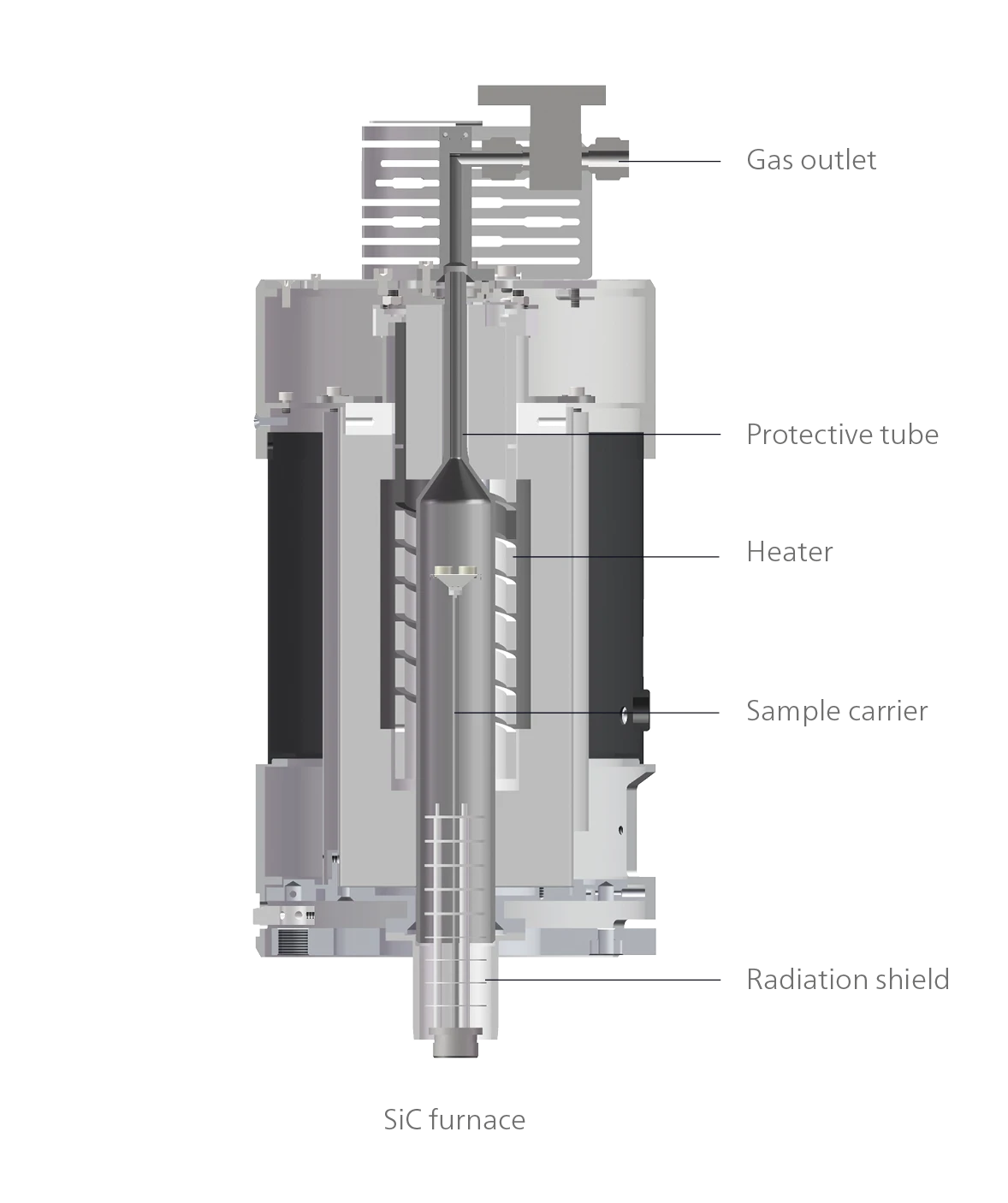
Measuring Principle
Here's how Simultaneous Thermal Analysis works:
- Sample Preparation: A small amount of the material (sample) is placed in a special container (crucible).
- Heating/Cooling: The sample is heated or cooled at a controlled rate.
- Measurement: As the temperature changes, the STA instrument records:
- Weight change: How much the sample's weight increases or decreases.
- Heat flow: How much heat is absorbed or released by the sample.
Specifications
Temperature Range
Balance performance
DSC Performance
Discover our carefully tailored Simultaneous Thermal Analyzer, designed to meet your needs:
- Heating rate: 0.001 to 50 K/min
- Temperature resolution: 0.001 K
- Various Sensor Options: TGA, TGA-DTA, TGA-DSC
- Optional 20-position ASC or 2nd furnace
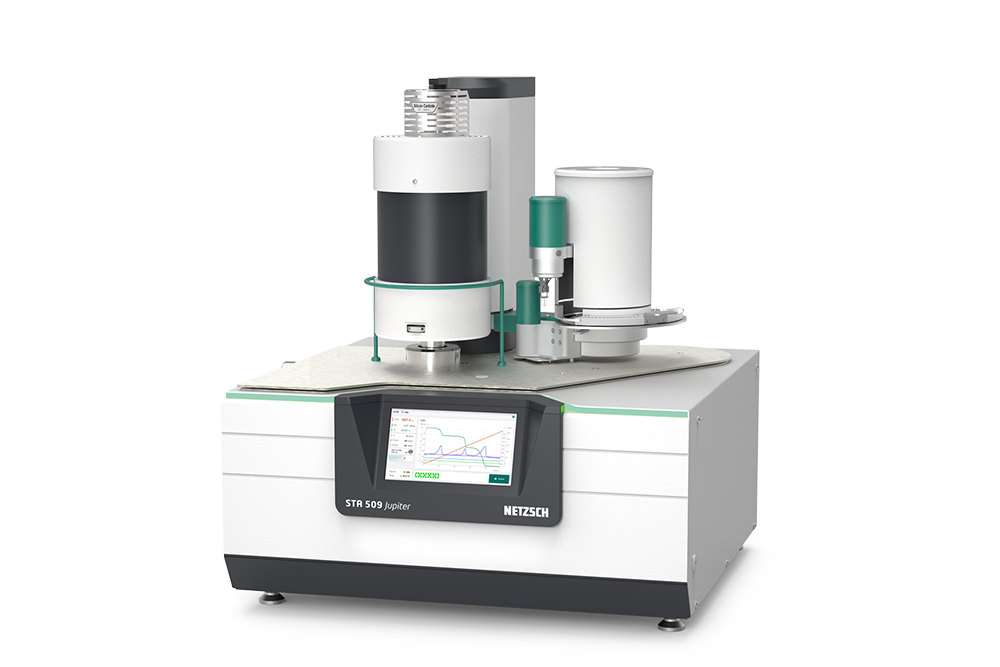
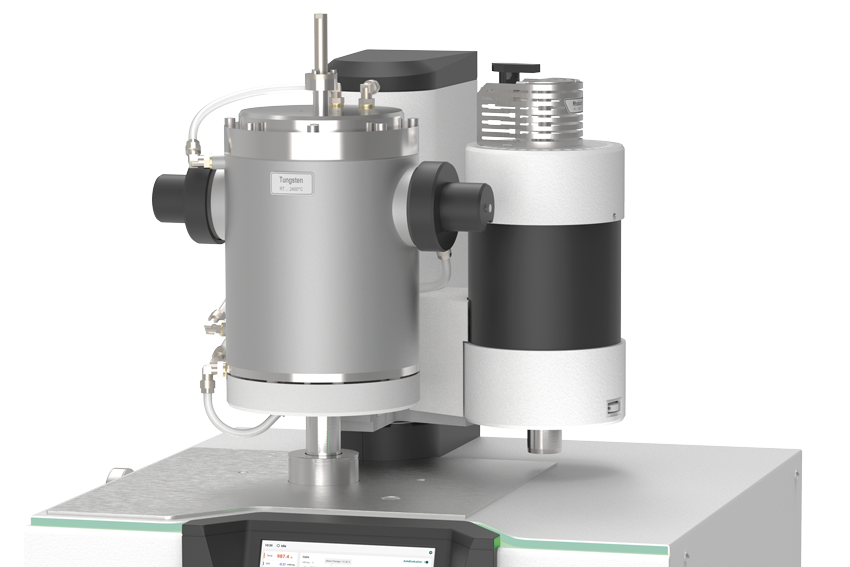
The Appropriate Furnace for Your Application
Various interchangeable furnaces are available to accommodate different application areas over the entire temperature range (-150°C to 2400°C). A double furnace hoist allows for the simultaneous installation of two different furnaces for improved sample throughput or for low- and high-temperature tests with the same instrument. The furnaces can easily be changed out by the operator. Therefore, the system is adaptable to any future application range.
Solutions for Special Applications: Humid Atmospheres up to 100% Water Vapor Concentration
The copper and water-vapor furnaces are engineered to be able to measure under humid atmospheres. Both systems incorporate supplementary heaters to prevent water condensation, ensuring reliable performance even under high dew point conditions, with up to 100% water concentration in the atmosphere. The copper furnace is equipped with an active cooling system for precise, long-term temperature control, even at room temperature or below, while the water-vapor furnace offers a broader temperature range of up to 1250°C for high-temperature applications.
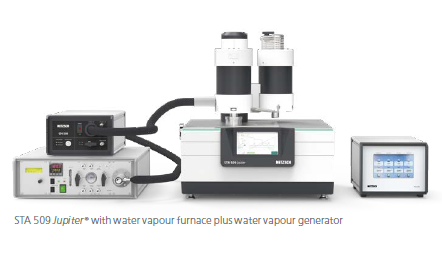
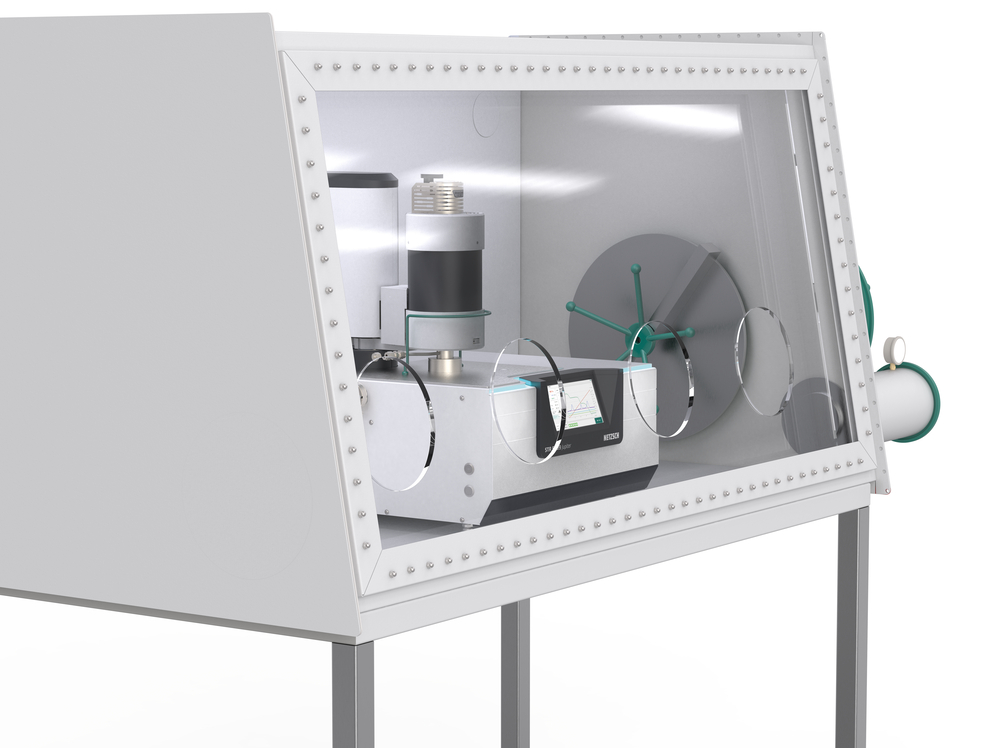
Glovebox and Hot Cell Setups
Certain materials, such as radioactive, toxic, or oxygen/moisture sensitive substances, require special handling to protect the operator's well-being and prevent environmental exposure. Our instruments offer specialized glove box or hot cell versions that are carefully designed to meet these unique requirements, including restricted instrument handling. These dedicated solutions prioritize safety while enabling seamless analysis, providing peace of mind when working with hazardous or sensitive materials.

Eco Mode - Thermal Analysis Made More Sustainable
70% LESS ENERGY AND COST – NO EXTERNAL TEMPERATURE CONTROL NEEDED
To obtain accurate thermogravimetric results with low drift behavior, most manufacturers have to resort to thermostatic control using a water circuit. Having to continuously run the thermostat consumes a lot of energy and produces waste heat, which subsequently needs to be regulated by air conditioning.
NETZSCH was able to eliminate the external thermostat. The temperature of the weighing chamber is now controlled electronically while maintaining excellent temperature stability. By eliminating the thermostat, the energy consumption of an STA 509 Jupiter® for an average user is reduced by 70% (when using the instrument 3 times a day on 250 days a year), which translates into a savings of 5,000 KW/h of electricity per year. Another way to run the unit more economically is to use the Eco Mode, which turns off the gases when they are not needed. All this makes the unit cheaper to run and effortlessly reduces your carbon footprint.
Hydrogen Research with
Thermal Analysis
Hydrogen (H2) is gaining attention for its potential role in sustainable practices and green technology. Research into the interaction of materials with hydrogen is critical for developing eco-friendly solutions that can significantly reduce environmental impact. One notable application is the use of hydrogen to mitigate high CO2 emissions from metallurgical processes through direct reduction, such as in iron ore reduction. The H2Secure concept developed by NETZSCH features a complete solution for conducting tests in environments with varying concentrations of hydrogen while providing utmost safety. This flexibility is achieved through a comprehensive safety protocol embedded in the system, enabling seamless performance of complex OxidationOxidation can describe different processes in the context of thermal analysis.oxidation-reduction cycles and precise analysis of reaction kinetics and material behavior under different conditions.

- The volume of H2 is precisely regulated by introducing hydrogen at the top of the furnace and confining it to a defined space above the continuously purged balance chamber.
- Gas concentrations of H2 and O2 are continuously measured for safe handling.
- The central communication unit, the H2Secure box, processes the overall information and controls the gas flows on the basis of pre-defined safety limits.
- Fail-safe operation is achieved by opening the magnetic valves in the event of a power failure, thus releasing an inert gas that removes the hydrogen from the system.
Evolved Gas Analysis
A significant feature of our thermal analysis instruments is their capability to be coupled with Evolved Gas Analysis (EGA) techniques. EGA is a powerful tool that enhances the functionality of thermal analysis by enabling the detailed study of gases evolved during heating and cooling. This coupling allows for a comprehensive understanding of the thermal behavior and composition of materials.
We offer coupling options with Fourier Transform Infrared Spectroscopy (FT-IR), Gas Chromatography-Mass Spectrometry (GC-MS), and Mass Spectrometry (MS). Each of these techniques provides unique advantages.
By integrating these advanced EGA techniques with our thermal analysis instruments, NETZSCH ensures that you receive comprehensive and accurate data for your research and development needs. Our commitment to innovation and quality guarantees that our instruments will meet your highest expectations.
Discover many more features:

Proven Excellence in Service
At NETZSCH Analyzing & Testing, we offer a comprehensive range of services globally to ensure the optimal performance and longevity of your thermoanalytical equipment. With a track record of proven excellence, our services are designed to maximize the effectiveness of your devices, extend their lifespan, and minimize downtime.
Unlock the full potential of your equipment with our tailored solutions, backed by years of industry expertise and innovation.
Software
STA 509 Jupiter® with Proteus® - Our Powerful Analytical Software
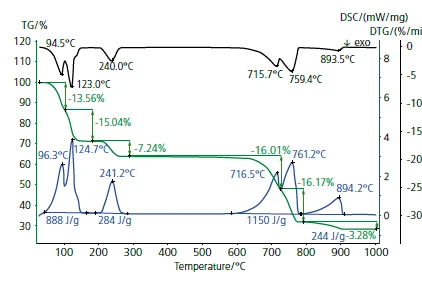
AutoEvaluation – Fast and Objective Results Right After a Measurement
AutoEvaluation is the industry’s first self-operating evaluation system for TGA and DSC analyses. It automatically evaluates significant mass changes, endo- or ExothermicA sample transition or a reaction is exothermic if heat is generated.exothermic reactions, generates DTG curves, and identifies peak temperatures without user input. It provides real-time, post-measurement display of evaluated curves and allows customization of detection settings and displayed results. Offering time efficiency and objectivity, AutoEvaluation benefits both novice and expert users. An example application is the thermal analysis of CuSO4·5H2O, showing a water release below 300°C, Decomposition reactionA decomposition reaction is a thermally induced reaction of a chemical compound forming solid and/or gaseous products. decomposition of CuSO4 between 550°C and 800°C, and reduction of CuO to Cu2O above 800°C.
Identify – The Database for Material Identification and Quality Control
Identify is a unique software tool in the field of thermal analysis for the identification and classification of materials. The included NETZSCH libraries contain more than 1300 entries from the application areas of polymers, organics, pharmaceuticals, food, cosmetics, inorganics, ceramics, metals and alloys. Signal types currently supported include DSC, DSC Specific Heat Capacity (cp)Heat capacity is a material-specific physical quantity, determined by the amount of heat supplied to specimen, divided by the resulting temperature increase. The specific heat capacity is related to a unit mass of the specimen.cp, TGA, TGA-c-DTA®, STA, DIL/TMA and DMA. Users can expand the database with libraries containing an unlimited amount of their own data. Ultimately, this growing collection of database entries and measurement conditions can also be extremely useful in preparing future experiments.

It is particularly advantageous that Identify can even simultaneously incorporate two types of measurements, such as TGA and DSC or c-DTA®, during identification¹. As shown in the example above, analysis with Identify in the temperature range below 500°C reveals that the TGA-DSC results are very similar to those found for gypsum (dihydrate, CaSO₄·2H₂O) in the database. The DSC peak detected at 575°C, which is due to the structural α→β transition of quartz, occurs also in the most similar database curve in that temperature range. Above 600°C, the best hit from the database search is a measurement showing the Decomposition reactionA decomposition reaction is a thermally induced reaction of a chemical compound forming solid and/or gaseous products. decomposition of calcium carbonate. In summary, the investigation showed that the unknown material consists of gypsum, quartz and calcium carbonate.
This instrument is LabV®️-primed
LabV®️ takes the data from your analytical instrument: It automatically imports all measurement data into a central and secure database solution, the LabV®️ software. This allows you to visualize the data in LabV®️ and to make them searchable. Your data will now be accessible from anywhere. Moreover you have the possibility to generate reports.
Additional Software Capabilities
Related Devices
- STA 509 Jupiter® Classic

Best Price/Performance Ratio
- RT to1600°C
- SiC furnace
- Balance resolution: 0.1 μg
- Optional 20-position ASC
- STA 449 F3 Jupiter®

The simultaneous thermal analyzer with maximum flexibility
- Temperature range: from -150°C up to 2400°C
- Choose between twelve types of easily interchangeable furnaces
- Various types of different sensors, sample carriers and crucibles
- STA 449 F1 Jupiter®
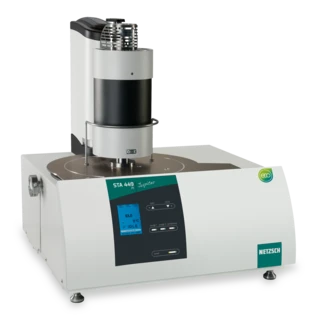
- STA 2500 Regulus
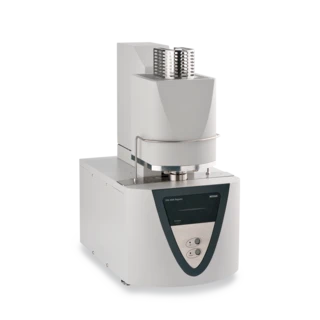
- STA 509 Jupiter® Supreme

Instrument for Highest Performance
- -150°C to 2000°C
- Choice of 9 different furnaces
- Balance resolution: 0.025 μg
- Optional 20-position ASC or 2nd furnace

Consultancy & Sales
Do you have further questions about the instrument or the method and would like to speak to a sales representative?
Service & Support
Do you already have an instrument and need technical support or spare parts?
